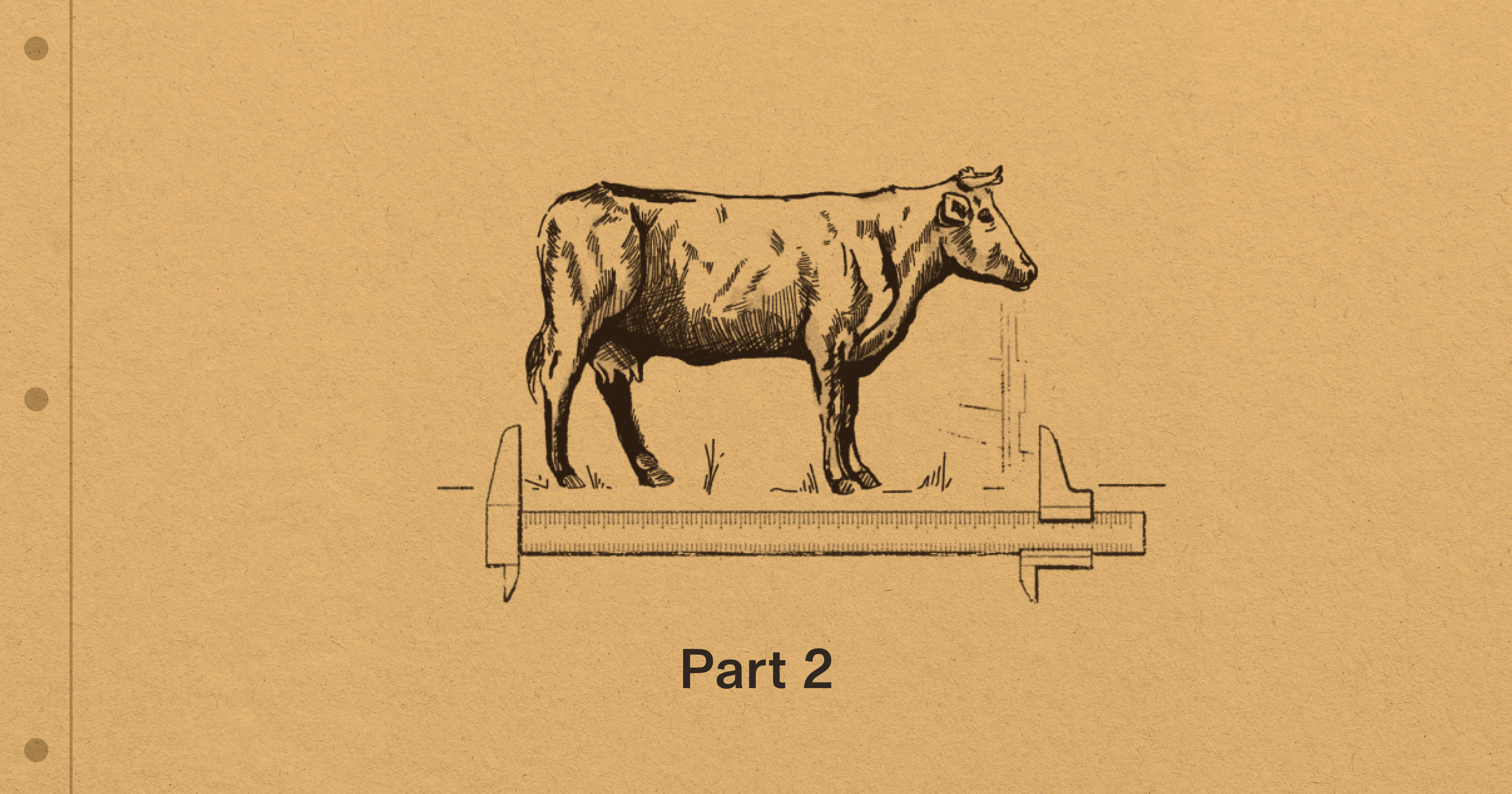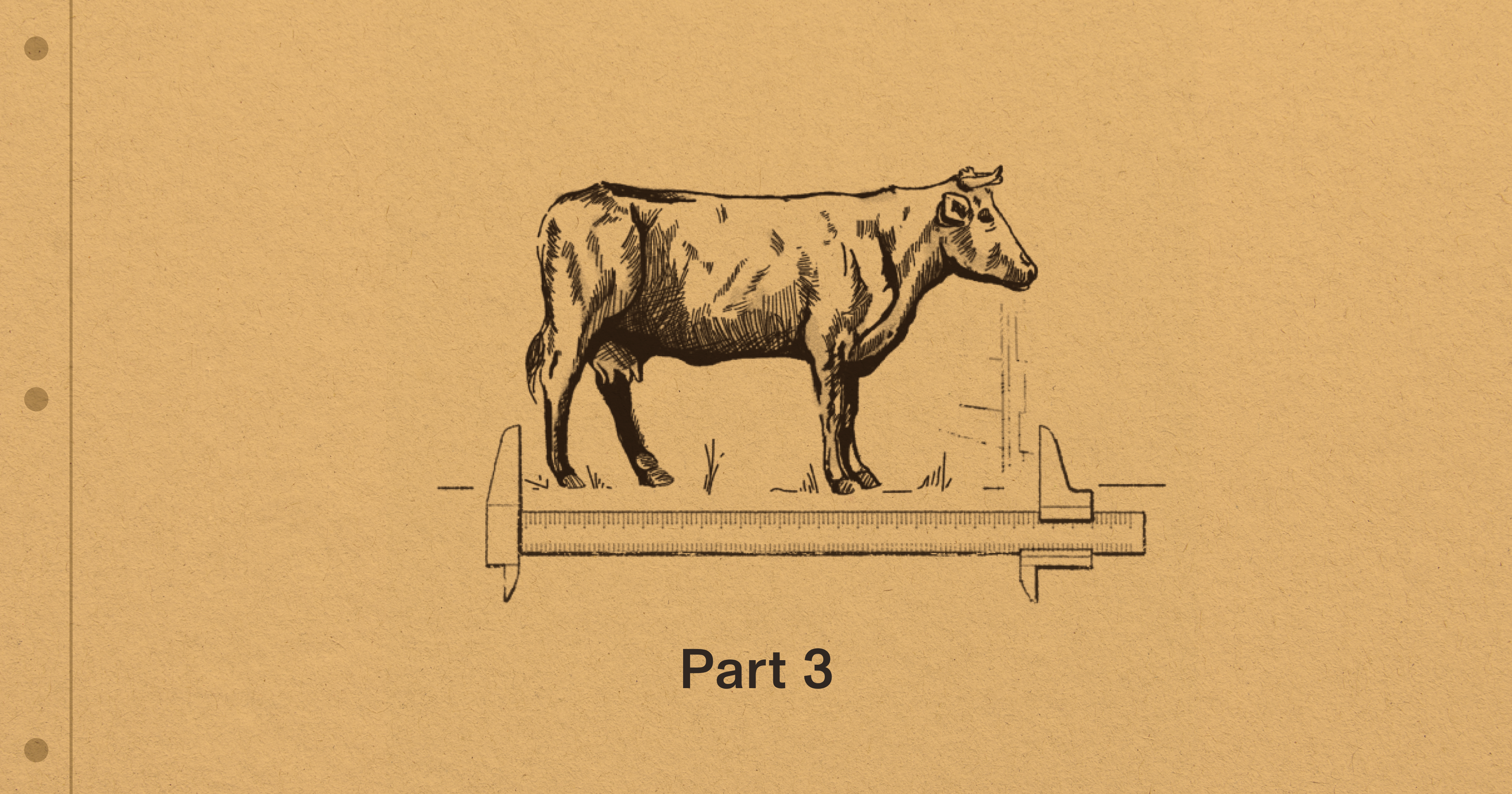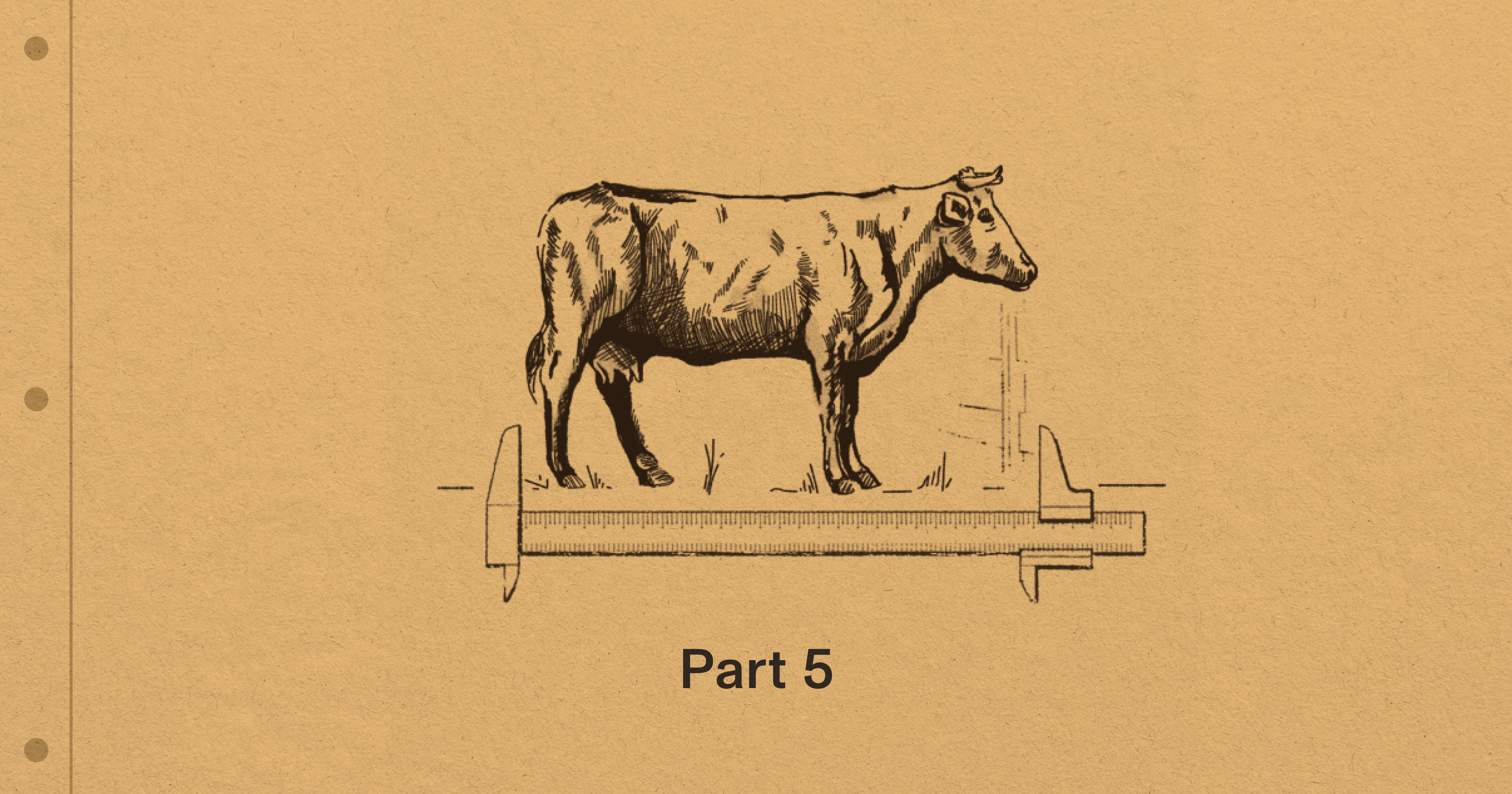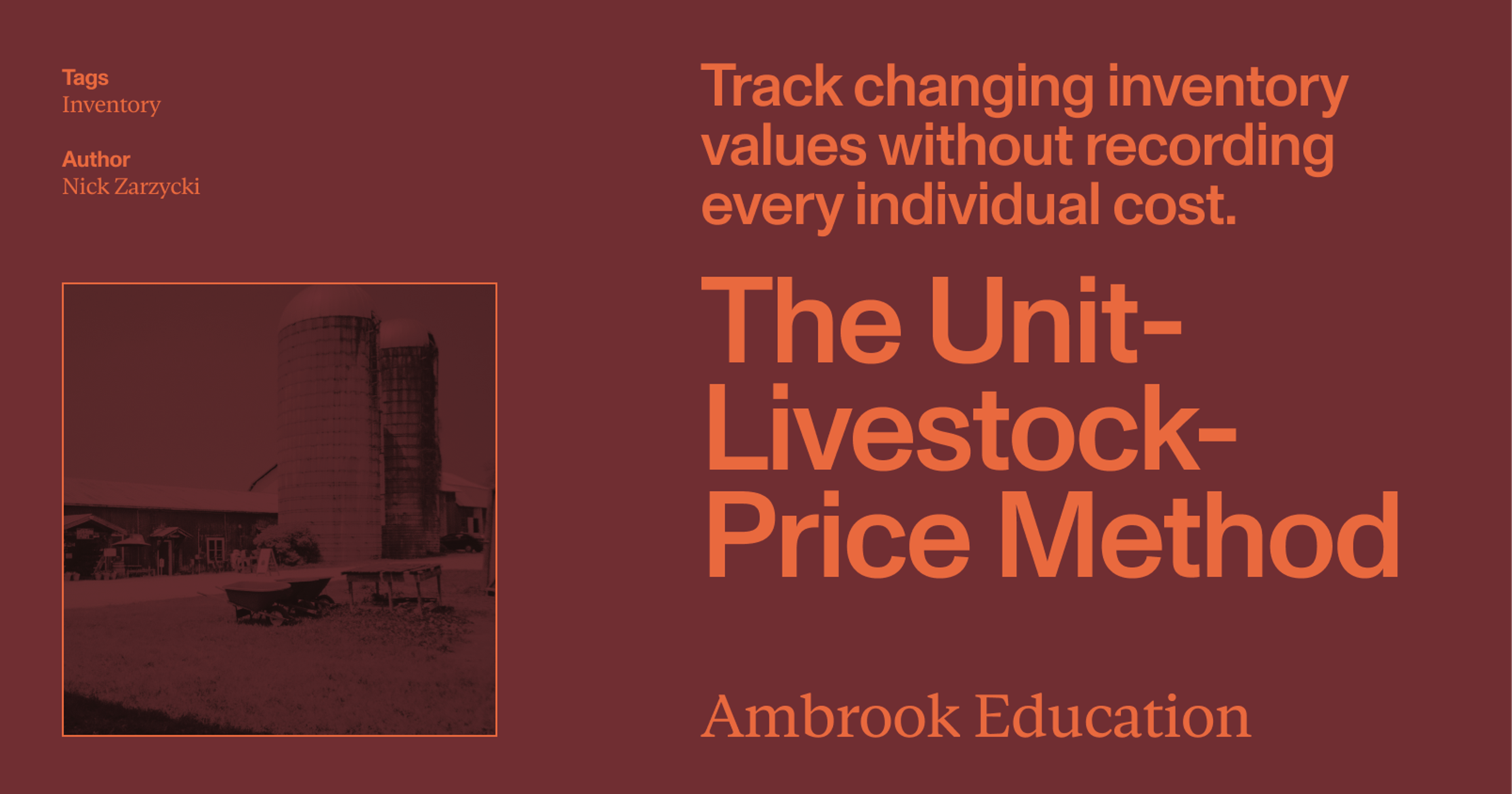Part Four of Managerial Accounting for Raising Livestock for Cow-calf, Dairies, and other Breeding Stock Operations
Tracking & Valuing Breeding Stock is the day-to-day work, but the first and most important end goal is to produce financial statements that you can analyze and use to assess the true performance of your operation.
Example Walk-through
In the Managerial Stock Flow Workbook we have modeled a hypothetical cow-calf operation that is calving and breeding in the early spring, and then accounting for weaning in the late spring / early summer season. The output of the Stock Flow summary is two journal entries that adjust the cash basis income into managerial income.
Here is a condensed cash basis income for the cow-calf operation might have been for Q1 2024:
Farm-raised Livestock Sale Income = $4,000
Vet Expenses = $600
Other Supplements = $250
3 Months of Grazing Fees = $750
Other Fixed Expenses = $5,000
Net Income (Loss) = ($2,600)
On the surface it appears like this operation is underwater early in the year, but now we will factor for the managerial Journal Entry in Q1 2024 from our workbook, which to re-state below (with debits and credits on the same account consolidated into one number for simplicity):
| Account | Debit | Credit | Notes |
|---|---|---|---|
| Cows | $23,000 | ||
| Change in Value from Death / Sales | $2,000 | 2 deaths | |
| Gain (Loss) in Value from Qty. Change | $25,000 | 25 bred heifers -> cow category | |
| Bred Heifers | $18,500 | ||
| Gain (Loss) in Value from Qty. Change | $18,500 | Net 25 new bred heifers after preg check | |
| Replacement Heifers | $32,500 | ||
| Change in Value from Death / Sales | $3,250 | 5 sold open heifers, related to the $4,000 in Farm-raised Livestock Sale Income | |
| Gain (Loss) in Value from Qty. Change | $29,250 | 45 replacement heifers became bred heifers | |
| Calves | $35,000 | ||
| Change in Value from Death / Sales | $2,500 | ||
| Gain (Loss) in Value from Qty. Change | $37,500 |
Though this is a long journal entry, the changes in value from death, sales, and qty. change all flow into our managerial income to paint a different picture:
Farm-Raised Livestock Sale Income = $4,000
Change in Value from Death / Sales = ($7,550)
Gross Income net of Value Changes = ($3,750)
Cash operating expenses = ($6,600)
Gain (Loss) in Value from Qty. Change = $51,750
Net Income net of Value Changes = $41,400
What you can see from this analysis is that the farm was actually very productive in the first quarter of the year. Successfully getting through the calving season is no small feat, and in fact represents significant value creation. The managerial financial statements properly reflect that fact.
One way to think about the “Gain (Loss) in Value from Qty. Change” of $51,750 is that, over the course of the previous year you spent this money raising replacement heifers and caring for pregnant heifers and cows. All of those expenses were included in net income for the previous year on a cash basis. This managerial entry – “Gain (Loss) in Value from Qty. Change” – is you reclassifying those expenses as investments into your breeding stock and booking the increased value of those assets as non-cash income.
A period over period view of the managerial balance sheet confirms this narrative:
| Balance - 12/31/2023 | Balance - 03/31/2023 | |
|---|---|---|
| Calf Inventory | $0 | $35,000 |
| Replacement Heifers | $32,500 | $0 |
| Raised Bred Heifers | $23,125 | $41,625 |
| Raised Cows | $125,000 | $148,000 |
| Purchased Bulls | $10,000 | $10,000 |
The main reason to implement the Base Value method for farm-raised assets is that it provides an ability to approximate a more accurate picture of an operation’s assets. This in turn lets you calculate useful profitability metrics like Return on Assets or Total Investment per Breeding Female (discussed more in the next section of our guide). Moreover, if the base values assigned are in fact close to the true cost of raising animals, the accrual adjusted income year over year should be relatively consistent and provide a more accurate insight into the financial performance of the operation. For most people, their intuition on base value costs can be fairly close to accurate, but if they off (e.g. the “Gain (loss) on sale of assets” seems too large in either direction) the base values can be adjusted. The benefit of using the Base Value method in this case is that you had a baseline estimate but have now used managerial accounting to inform a revised estimate.
For practice, you can use the Q2 2024 journal entry in the Managerial Stock Flow Workbook to project out the balance sheet for 6/30/2024. For an additional case study as well as an example related to the Full-Cost Absorption method you can refer to the resources from the OK State extension office.
Managerial Entries on Ambrook
Ambrook makes it easy to enter managerial adjustments to your income through a feature called Balance Adjustments. For any asset type – replacement heifers, cows, etc – you can record a debit or credit directly on the account, and you can split that adjustment into line items to break it out by gains on deaths/sales versus changes in quantity. Finally, you can apply Enterprise tags onto these balance adjustments so your gains on deaths, sales, and quantity changes so those line items appear on the corresponding Enterprise P&L statements.
With operational data and managerial financial statements in hand, there are a number of useful KPIs and Benchmarks that you can produce that will help you measure operational efficiency and plan for the future more effectively.






